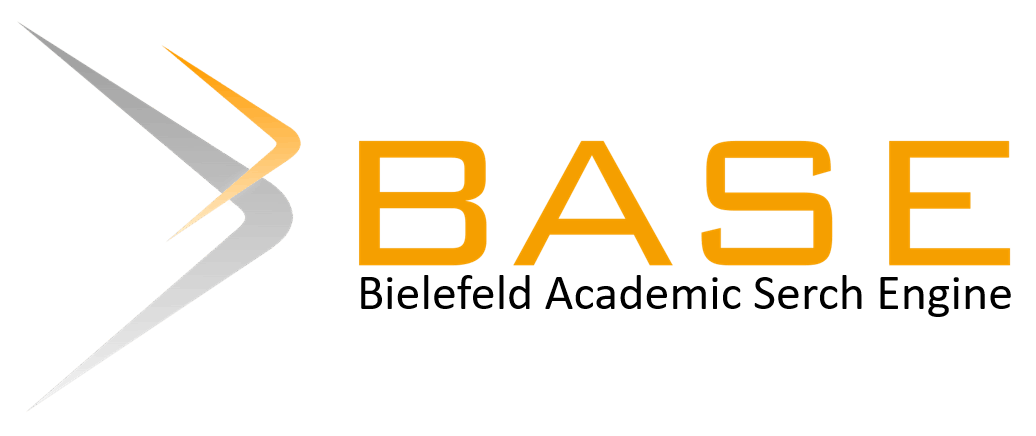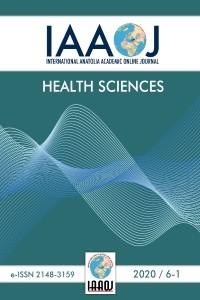Öz
The aim of this study was to compare the hopefulness levels of adolescents with thalassemia major (TM) and healthy adolescents, and to determine the impact of some sociodemographic and disease-related characteristics of adolescents with TM on their hopefulness. This cross-sectional and correlational study was conducted in 112 adolescents with TM and 121 healthy adolescents, a total of 233 adolescents. The study sample was selected using the convenience sampling method. While the mean Hopefulness Scale for Adolescents (HSA) score of the adolescents with TM was 1769.9±290.5, it was observed that the mean HSA score of the healthy adolescents was 1824.5±267.9, but the difference was not found to be statistically significant (t=1.491, p=0.137). It was found that, after controlling for the other factors, the father’s educational status impacted the hopefulness score of adolescents with TM and the educational status of a father with an elementary/middle school education had an adverse effect on the hopefulness score (t = -2.601, p=0.011). In this study no difference was found between the hopefulness levels of adolescents with TM and those of healthy adolescents. The only sociodemographic factor that had an impact on the hopefulness of the adolescents with TM was their father’s level of education. Nurses can provide professional help and support to the thalassemic patients who experience hopelessness, and can activate social support systems to help patients cope with such feelings.
Anahtar Kelimeler
Proje Numarası
ASYO 13003
Kaynakça
- 1. Sayani FA, Kwiatkowski JL. Increasing prevalence of thalassemia in America: Implications for primary care. Annals of Medicine 2015; 47(7), 592-604.
- 2. Vosper J, Evangeli M, Porter JB, Shah F. Psychological factors associated with episodic chelation adherence in thalassemia. Hemoglobin 2018, 42(1), 30-36.
- 3. Ağaoğlu, L. Talasemi ile yaşam (Life with Thalassemia). Türkiye Klinikleri Journal Hem Onc-Special Topics 2010; 3(1), 9-13.
- 4. Cao A, Galanello R. Beta-thalassemia. Genetics in Medicine 201; 12(2), 61-76.
- 5. Topal Y, Topal H, Ceyhan MN, Azık MF, & Kocabaş CN. Beta Talasemi̇ ile Mücadelede Muğla Deneyi̇mleri̇ (Struggling with Beta Thalassemia: Cases from Muğla), Turkish Journal of Pediatric Disease 2015; 9 (3), 226-229.
- 6. Aydınok Y. Iron chelation therapy as a modality of management. Hematology/Oncology Clinics of North America. 2018; 32: 261-275.
- 7. Fortin PM, Fisher SA, Madgwick KV, Trivella M, Hopewell S, Doree C, et. al. Interventions for improving adherence to iron chelation therapy in people with sickle cell disease or thalassaemia. Cochrane Database of Systematic Reviews 2018; Issue 5. Art. No.: CD012349. 8. Aydınok Y. Thalassemia. Hematology 2012; 17(1), 28-31.
- 9. Uz B, Ongun M, Eliaçık E, Işık A, Aksu S, Büyükaşık Y, ve ark. Beta talasemi major hastalarında yaşam kalitesinin KF-36 ölçeği ile değerlendirilmesi: Tek merkez çalışması, Measuring quality of life with the KF-36 scale in patients with beta thalassemia: a single-site study. Yeni Tıp Dergisi 2013; 30 (2), 70-74.
- 10. Marcon A, Motta I, Taher AT, Cappellini MD. Clinical complications and their management. Hematology/Oncology Clinics of North America 2018; 32(2), 223-236. 11. Ghanizadeh A, Khajavian S, Ashkani H. Prevalence of psychiatric disorders, depression, and suicidal behavior in child and adolescent with thalassemia major. Journal of Pediatric Hematology/Oncology 2006; 28(12), 781-784.
- 12. Moorjani JD, Issac C. Neurotic manifestations in adolescents with thalassemia major. Indian Journal of Pediatrics 2006; 73(7), 603-607.
- 13. Çelebi Kaya B. Βeta-talasemi major hastalarında psikiyatrik komorbidite sıklığı ve psikiyatrik bozuklukların yaşam kalitesi ile ilişkisi. Uzmanlık Tezi, Bakırköy Ord. Prof. Mazhar Osman Ruh Sağlığı ve Sinir Hastalıkları Eğitim ve Araştırma Hastanesi, İstanbul, 2009. Retrieved from https://updoc.site/download/eta-talasemi-major-hastalarnda-psikiyatrik-komorbidite-skl-vepdf E.T: 20.06.2012
- 14. Shaligram D, Girimaji SC, Chaturvedi SK. Psychological problems and quality of life in children with thalassemia. Indian Journal of Pediatrics 2007; 74(8), 727-730.
- 15. Gharaibeh HF, Gharaibeh MK. Factors influencing health-related quality of life of thalassemic Jordanian children. Child: Care, Health and Development 2012; 38(2), 211-218.
- 16. Gollo G, Savioli G, Balocco M, Venturino C, Boeri E, Costantini M, Forni GL. Changes in the quality of life of people with thalassemia major between 2001 and 2009. Patient Preference and Adherence 201; 7, 231-236.
- 17. Behdani F, Badiee Z, Hebrani P, Moharreri F, Badiee AH, Hajivosugh N, et.al. Psychological aspects in children and adolescents with major thalassemia: a case-control study. Iranian Journal of Pediatrics 2015; 25(3), 322.
- 18. Lee YL, Lin DT, Tsai SF. Disease knowledge and treatment adherence among patients with thalassemia major and their mothers in Taiwan. Journal of Clinical Nursing 2008; 18(4), 529-538.
- 19. Saini A, Chandra J, Goswami U, Singh V, Dutta AK. Case control study of psychosocial morbidity in β thalassemia major. The Journal of Pediatrics 2007; 150(5): 516-520.
- 20. Shaligram D, Girimaji SC, Chaturvedi SK. Psychological problems and quality of life in children with thalassemia. Indian Journal of Pediatrics 2007; 74(8), 727-730.
- 21. Gharaibeh H, Amarneh BH, Zamzam SZ. The psychological burden of patients with beta thalassemia major in Syria. Pediatrics International 2009, 51(5), 630-636.
- 22. Hashemi A, Banaei-Boroujeni S, Kokab N. Prevalence of major depressive and anxiety disorders in hemophilic and major beta thalassemic patients. Iranian Journal of Pediatric Hematology Oncology 2012; l2(1), 11-16.
- 23. Adib-Hajbaghery M, Ahmadi M, Poormansouri S. Health related quality of life, depression, anxiety and stress in patients with beta-thalassemia major. Iranian Journal of Pediatric Hematology Oncology 2015; 5(4),193-205.
- 24. Tajvidi M, Zeighami MS. The level of loneliness, hopelessness and self-esteem in major thalassemia adolescents. Scientific Journal of Iran Blood Transfus Organ 2012; 9(1), 36-43.
- 25. Pourmovahed Z, Dehghani KH, Yasini ASM. Evaluation of hopelessness and anxiety in young patients with thalassemia major. Journal of Medical Research 2003; 2(1), 45-52.
- 26. Esenay FI, Conk Z. Sağlıklı ve kanserli ergenlerde umut. Doktora Tezi. Ege Üniversitesi Sağlık Bilimleri Enstitüsü, İzmir, Türkiye. 2007. Retrieved from: https://tez.yok.gov.tr/UlusalTezMerkezi/tezSorguSonucYeni.jsp
- 27. Hinds PS, Gattuso JS. Measuring hopefulness in adolescents. Journal of Pediatric Oncology Nursing 1991; 8(2), 92-94.
- 28. Cantrell MA, Lupinacci PA. Predictive model of hopefulness for adolescents. Journal of Adolescent Health 2004; 35, 478-485.
- 29. Aydınok Y, Erermis Bukuşoğlu N, Yılmaz D, Solak U. Psychosocial implications of thalassemia major. Pediatrics International 2005; 47(1): 84-89.
- 30. Gharaibeh H, Barqawi MA, Al-Awamreh K, Al Bashtawy M. Clinical burdens of β-thalassemia major in affected children. Journal of Pediatric Hematology/Oncology 2018; 40(3), 182-187.
- 31. Adanır SA, Taşkıran G, Koparan C, Özatalay E. Beta Talasemili ergenlerde sosyal, duygusal ve davranışsal güçlüklerin ve ebeveynlerinde psikopatolojinin değerlendirilmesi. JCP 2017; 15 (3), 35-46.
Öz
Bu çalışmanın amacı, talasemi majörlü ergenler ile sağlıklı
ergenlerin umut düzeylerini karşılaştırmak ve talasemi majörlü ergenlerin bazı
sosyodemografik özellikleri ile umut düzeylerinin ilişkisini belirlemekti. Bu
tanımlayıcı ve ilişki arayıcı çalışma, talasemi
majörlü 112 ergen ile 121 sağlıklı ergen olmak üzere toplam 233 ergen ile yapılmıştır.
Araştırma örneklemi olasılıksız örnekleme yöntemi kullanılarak seçilmiştir. Talasemi
majörlü ergenlerin umutluluk ölçeği puan ortalaması 1769.9 ± 290.5 iken,
sağlıklı ergenlerin puan ortalaması 1824.5 ± 267.9 olarak belirlenmiştir fakat
istatistiksel olarak anlamlı farklılık bulunmamıştır (t=1.491, p=0.137). Diğer
faktörler kontrol altına alındıktan sonra baba eğitim durumunun talasemi
majörlü ergenlerin umutluluk puanını etkileyen faktör olduğu ve babanın
ilkokul/ortaokul mezunu olmasının umutluluk puanını olumsuz etkileyen bir
faktör olduğu bulunmuştur (t = -2.601, p=0.011). Talasemi majörlü ergenlerin umutluluk ölçeği puan ortalaması sağlıklı
ergenlerin umutluluk ölçeği puan ortalamaları arasındaki istatistiksel olarak
anlamlı fark bulunmamıştır. TM'li ergenlerin umutlulukları üzerinde etkisi olan
tek sosyodemografik faktör babalarının eğitim düzeyiydi. Hemşireler, umutsuzluk
yaşayan talasemi hastalarına profesyonel yardım ve destek sağlayabilir ve
hastaların bu tür duygularla başa çıkmasına yardımcı olmak için sosyal destek
sistemlerini etkinleştirebilirler.
Anahtar Kelimeler
Destekleyen Kurum
ADNAN MENDERES ÜNİVERSİTESİ BİLİMSEL ARAŞTIRMA PROJE BİRİMİ
Proje Numarası
ASYO 13003
Teşekkür
Araştırmaya katılan ergenlere ve çalışmanın yapıldığı kurum personeline teşekkür ederiz.
Kaynakça
- 1. Sayani FA, Kwiatkowski JL. Increasing prevalence of thalassemia in America: Implications for primary care. Annals of Medicine 2015; 47(7), 592-604.
- 2. Vosper J, Evangeli M, Porter JB, Shah F. Psychological factors associated with episodic chelation adherence in thalassemia. Hemoglobin 2018, 42(1), 30-36.
- 3. Ağaoğlu, L. Talasemi ile yaşam (Life with Thalassemia). Türkiye Klinikleri Journal Hem Onc-Special Topics 2010; 3(1), 9-13.
- 4. Cao A, Galanello R. Beta-thalassemia. Genetics in Medicine 201; 12(2), 61-76.
- 5. Topal Y, Topal H, Ceyhan MN, Azık MF, & Kocabaş CN. Beta Talasemi̇ ile Mücadelede Muğla Deneyi̇mleri̇ (Struggling with Beta Thalassemia: Cases from Muğla), Turkish Journal of Pediatric Disease 2015; 9 (3), 226-229.
- 6. Aydınok Y. Iron chelation therapy as a modality of management. Hematology/Oncology Clinics of North America. 2018; 32: 261-275.
- 7. Fortin PM, Fisher SA, Madgwick KV, Trivella M, Hopewell S, Doree C, et. al. Interventions for improving adherence to iron chelation therapy in people with sickle cell disease or thalassaemia. Cochrane Database of Systematic Reviews 2018; Issue 5. Art. No.: CD012349. 8. Aydınok Y. Thalassemia. Hematology 2012; 17(1), 28-31.
- 9. Uz B, Ongun M, Eliaçık E, Işık A, Aksu S, Büyükaşık Y, ve ark. Beta talasemi major hastalarında yaşam kalitesinin KF-36 ölçeği ile değerlendirilmesi: Tek merkez çalışması, Measuring quality of life with the KF-36 scale in patients with beta thalassemia: a single-site study. Yeni Tıp Dergisi 2013; 30 (2), 70-74.
- 10. Marcon A, Motta I, Taher AT, Cappellini MD. Clinical complications and their management. Hematology/Oncology Clinics of North America 2018; 32(2), 223-236. 11. Ghanizadeh A, Khajavian S, Ashkani H. Prevalence of psychiatric disorders, depression, and suicidal behavior in child and adolescent with thalassemia major. Journal of Pediatric Hematology/Oncology 2006; 28(12), 781-784.
- 12. Moorjani JD, Issac C. Neurotic manifestations in adolescents with thalassemia major. Indian Journal of Pediatrics 2006; 73(7), 603-607.
- 13. Çelebi Kaya B. Βeta-talasemi major hastalarında psikiyatrik komorbidite sıklığı ve psikiyatrik bozuklukların yaşam kalitesi ile ilişkisi. Uzmanlık Tezi, Bakırköy Ord. Prof. Mazhar Osman Ruh Sağlığı ve Sinir Hastalıkları Eğitim ve Araştırma Hastanesi, İstanbul, 2009. Retrieved from https://updoc.site/download/eta-talasemi-major-hastalarnda-psikiyatrik-komorbidite-skl-vepdf E.T: 20.06.2012
- 14. Shaligram D, Girimaji SC, Chaturvedi SK. Psychological problems and quality of life in children with thalassemia. Indian Journal of Pediatrics 2007; 74(8), 727-730.
- 15. Gharaibeh HF, Gharaibeh MK. Factors influencing health-related quality of life of thalassemic Jordanian children. Child: Care, Health and Development 2012; 38(2), 211-218.
- 16. Gollo G, Savioli G, Balocco M, Venturino C, Boeri E, Costantini M, Forni GL. Changes in the quality of life of people with thalassemia major between 2001 and 2009. Patient Preference and Adherence 201; 7, 231-236.
- 17. Behdani F, Badiee Z, Hebrani P, Moharreri F, Badiee AH, Hajivosugh N, et.al. Psychological aspects in children and adolescents with major thalassemia: a case-control study. Iranian Journal of Pediatrics 2015; 25(3), 322.
- 18. Lee YL, Lin DT, Tsai SF. Disease knowledge and treatment adherence among patients with thalassemia major and their mothers in Taiwan. Journal of Clinical Nursing 2008; 18(4), 529-538.
- 19. Saini A, Chandra J, Goswami U, Singh V, Dutta AK. Case control study of psychosocial morbidity in β thalassemia major. The Journal of Pediatrics 2007; 150(5): 516-520.
- 20. Shaligram D, Girimaji SC, Chaturvedi SK. Psychological problems and quality of life in children with thalassemia. Indian Journal of Pediatrics 2007; 74(8), 727-730.
- 21. Gharaibeh H, Amarneh BH, Zamzam SZ. The psychological burden of patients with beta thalassemia major in Syria. Pediatrics International 2009, 51(5), 630-636.
- 22. Hashemi A, Banaei-Boroujeni S, Kokab N. Prevalence of major depressive and anxiety disorders in hemophilic and major beta thalassemic patients. Iranian Journal of Pediatric Hematology Oncology 2012; l2(1), 11-16.
- 23. Adib-Hajbaghery M, Ahmadi M, Poormansouri S. Health related quality of life, depression, anxiety and stress in patients with beta-thalassemia major. Iranian Journal of Pediatric Hematology Oncology 2015; 5(4),193-205.
- 24. Tajvidi M, Zeighami MS. The level of loneliness, hopelessness and self-esteem in major thalassemia adolescents. Scientific Journal of Iran Blood Transfus Organ 2012; 9(1), 36-43.
- 25. Pourmovahed Z, Dehghani KH, Yasini ASM. Evaluation of hopelessness and anxiety in young patients with thalassemia major. Journal of Medical Research 2003; 2(1), 45-52.
- 26. Esenay FI, Conk Z. Sağlıklı ve kanserli ergenlerde umut. Doktora Tezi. Ege Üniversitesi Sağlık Bilimleri Enstitüsü, İzmir, Türkiye. 2007. Retrieved from: https://tez.yok.gov.tr/UlusalTezMerkezi/tezSorguSonucYeni.jsp
- 27. Hinds PS, Gattuso JS. Measuring hopefulness in adolescents. Journal of Pediatric Oncology Nursing 1991; 8(2), 92-94.
- 28. Cantrell MA, Lupinacci PA. Predictive model of hopefulness for adolescents. Journal of Adolescent Health 2004; 35, 478-485.
- 29. Aydınok Y, Erermis Bukuşoğlu N, Yılmaz D, Solak U. Psychosocial implications of thalassemia major. Pediatrics International 2005; 47(1): 84-89.
- 30. Gharaibeh H, Barqawi MA, Al-Awamreh K, Al Bashtawy M. Clinical burdens of β-thalassemia major in affected children. Journal of Pediatric Hematology/Oncology 2018; 40(3), 182-187.
- 31. Adanır SA, Taşkıran G, Koparan C, Özatalay E. Beta Talasemili ergenlerde sosyal, duygusal ve davranışsal güçlüklerin ve ebeveynlerinde psikopatolojinin değerlendirilmesi. JCP 2017; 15 (3), 35-46.
Ayrıntılar
| Birincil Dil | İngilizce |
|---|---|
| Konular | Sağlık Kurumları Yönetimi |
| Bölüm | Araştırma Makalesi |
| Yazarlar | |
| Proje Numarası | ASYO 13003 |
| Yayımlanma Tarihi | 30 Ocak 2020 |
| Yayımlandığı Sayı | Yıl 2020 Cilt: 6 Sayı: 1 |
Dergimizin Tarandığı İndeksler







International Anatolia Academic Online Journal Health Sciences Creative Commons Alıntı-GayriTicari-Türetilemez 4.0 Uluslararası Lisansı ile lisanslanmıştır.






